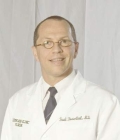Walking around the Cardiac Intensive Care Unit (CICU) with one of my heart failure colleagues, I was struck by the relative absence of patients with acute myocardial infarctions. Over the past 50 years, they have been replaced by patients with advanced heart failure, many of whom had been implanted with left ventricular assist devices or connected to a variety of extracorporeal support devices.
Although some of the patients were new New York Heart Association class IV patients, many had been treated for years with beta-blockers and renal ACE inhibitors or aldosterone antagonists. Their disease had now recurred and progressed despite what I had presumed to be curative drug therapy. They were experiencing the relentless progression of heart failure despite treatment that was developed almost 20 years ago and which has not advanced much since then. Many cardiologists of my generation presumed that heart failure was no longer a problem even though we knew that annual mortality rates of heart failure remained in the 10% range and that its incidence was increasing.
It has become clear to many of us that there has been little advance in the treatment of heart failure since the introduction of those 20th century drugs, notwithstanding the importance of the development of end stage cardiac support devices.
It seems our success in treating patients with ischemic heart disease had only delayed the expression and progression of cardiac dysfunction. Even with our success in treating patients with nonischemic heart failure, whatever that is, after reaching a brief plateau with drug therapy, they often experienced recurrence. It is true that many patients had improved as a result of drug therapy and that progression had been arrested and in some patients heart failure had actually been reversed. But many, like the patients I saw in our CICU, had progressed to advanced heart failure with little to be offered other than end-stage device therapy or heart transplantation. Both of these outcomes, although lifesaving, represent therapeutic failures.
It is time that we refocus our efforts on the treatment and eradication of heart failure. Although a number of contemporary treatment strategies have been developed, for the most part they have only resulted in modest additive benefit. We need to reconsider the protection of the heart during and after an ischemic event and prevent the insidious progression of ischemia in those patients with chronic coronary heart disease. In addition we need to direct our research to understand the pathophysiology of the “heart” in heart failure and to unlock the mysticism associated with the many etiologies of idiopathic nonischemic heart failure. Our knowledge in this disease or diseases is embarrassingly poor.
It is time to move on from the 20th century drug foundation of therapy based on neurohumoral control, to a 21st century understanding of the cellular and molecular targets affecting cardiac function. Recent investigations of collagen synthesis and degradation, cardiac energetics, and mitochondrial function have provided provocative information but represent only forays into the vast unknown mechanism of heart failure. The solution to worldwide heart failure is not in device therapy for everyone but in a deeper understanding of the mechanisms of heart failure and its application to therapy.
Dr. Goldstein, medical editor of Cardiology News, is professor of medicine at Wayne State University and division head emeritus of cardiovascular medicine at Henry Ford Hospital, both in Detroit. He is on data safety monitoring committees for the National Institutes of Health and several pharmaceutical companies.




